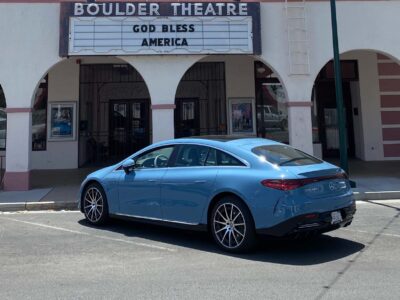Al Pacino’s role as the vicious drug lord Tony Montana in “Scarface” is iconic and responsible for several unforgettable quotes. In one of the film’s more peaceful scenes — right after a shootout — Tony Montana explains why he’s so sure that his love interest shares the same feelings towards him. “The eyes, Chico, they never lie.”
While the character was probably trying to convey a meaning akin to the adage that the eyes are the window of the soul, revealing glimpses into the inner workings of our very selves, the quote could also be taken as a loose but fairly accurate statement about how exceptional human eyes are compared to their other senses.
Sight is not just the most important of the human senses but also one of the few senses that’s actually better than most other animals. Eyes use different cones to perceive colors, and humans have three cones that interpret red, blue, and green. This means that humans can see about 1 million colors, and dogs, which only have two cones, can only see about 10,000 colors.
In terms of visual acuity, or being able to see far and clearly, human eyes are among the best (though eagles take the cake) in the mammal kingdom — they’re seven times sharper than a cat’s and roughly 50 times sharper than a rat’s. The common sentiment holds that our sense of smell is as bad as our eyesight is good.
Photo Courtesy Nicolas-Debray
Dogs can sniff out bombs, drugs, and even cancers. Pigs are used to track down hard-to-find truffles. Sharks can detect a tiny drop of blood within the infinite depths of the ocean. However, recent studies have found that the olfactory senses of humans are much more than average than previously thought. In some cases, like detecting fruit aromas, human smell was actually better than dogs. There’s one odor neither humans nor dogs are particularly good at detecting: fake sneakers.
Enter artificial intelligence (AI) startup Osmo’s hyper-smelling AI that currently uses scent-mapping to detect counterfeit sneaker odors but sees an entire realm of future possibilities for this type of technology.
Everything has a smell, and those smells are tiny volatile molecules flying off objects and into the surrounding environment, like our noses. There are trillions of these individual molecules flying around the world, and all of them can be measured and tracked — using breakthrough scientific techniques and machinery, of course.
Osmo and its founder, Alex Wiltschko, have taken this approach a step further by developing their Primary Odor Map (POM), which the startup says is the world’s first scent map capable of predicting an odor based on a molecule’s structure.
Photo Courtesy Google Research
The POM combines highly advanced sensors, machine learning, existing hardware, and modern AI tools to identify, record, and then map these molecular scents on its digital platform. About the size of a backpack, the current Osmo machine is the culmination of years of laboratory testing and development that stretches back to a different digital platform: Google.
The foundation of the innovative scent platform first took root while Wiltschko and his core team were still working at Google Research. When Osmo eventually spun off as its own venture in early 2023, Google Ventures and Lux Capital led its initial $60 million funding round.
The startup is currently using its technology to help sneaker companies identify counterfeit shoes, a multi-billion dollar issue for the industry. Wiltschko told Fast Company that Nike reported that it earned $60 billion in revenue last year, yet counterfeit Nike goods earned approximately $20 billion over that same period.
Fake sneakers can be quite sophisticated, with the better ones looking identical to actual versions. Instead of looking, Osmo is smelling, and that’s an entirely different level of difficulty for counterfeiters. Replicating the look of genuine leather with a cheaper alternative isn’t enough anymore. Osmo’s scent-sniffing AI requires fake leather to mimic the exact scent of real leather. Recently, the startup pilot tested its counterfeit-detecting machine by teaming up with a major sneaker resale company, and the company said it yielded a 95% success rate in identifying authentic shoes from fakes.
Photo Courtesy Osmo
For now, the AI company is continuing to modify and improve its scent-smelling platform’s sneaker detection capabilities, turning the innovative technology from a cool concept into a world-changing product. As for the future — it’s almost limitless (with enough creativity).
Osmo has been working on scent-making technology that could create a custom scent, place that scent into a product at a manufacturing facility, later test the product once it arrives at storefronts for that specific scent, and instantly be able to know if the product has been tampered with or not. And that’s just one alternative use case.
Wiltschko and other researchers have also talked about licensing Osmo’s scent technology to major fragrance companies, using it to create a better mosquito repellent, and even developing the “Shazam” for smell — a phone application that instantly detects nearby smells. The future is always uncertain, but it certainly looks bright for Osmo.





